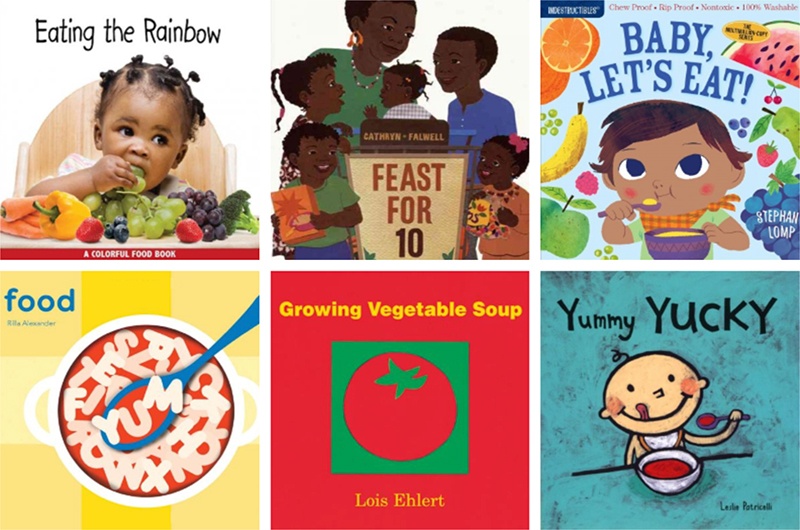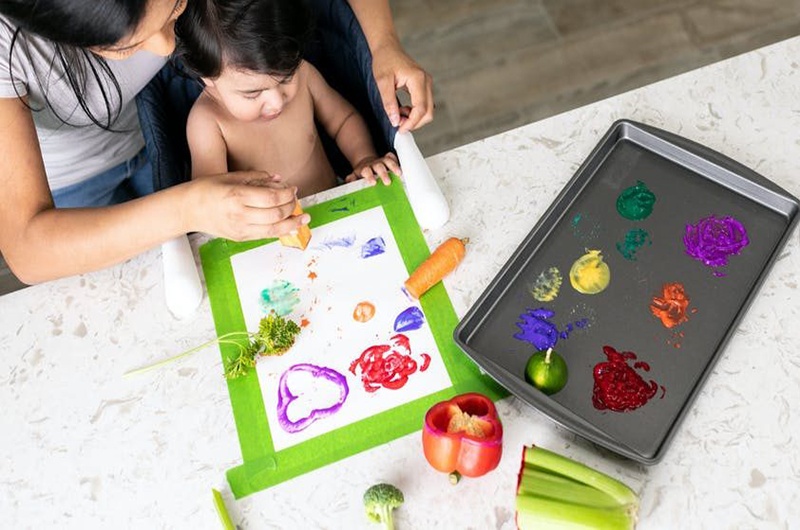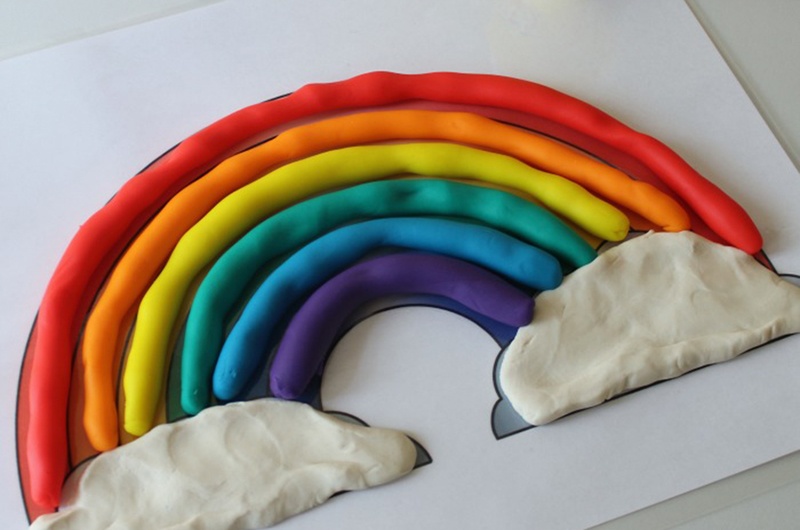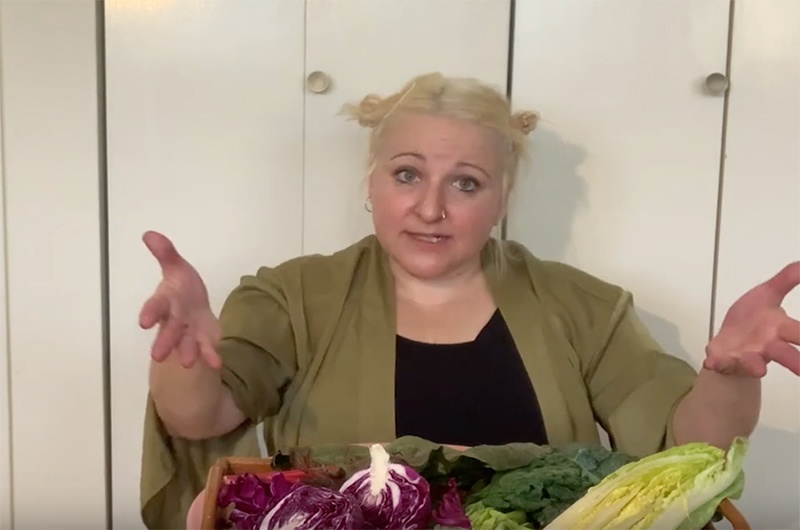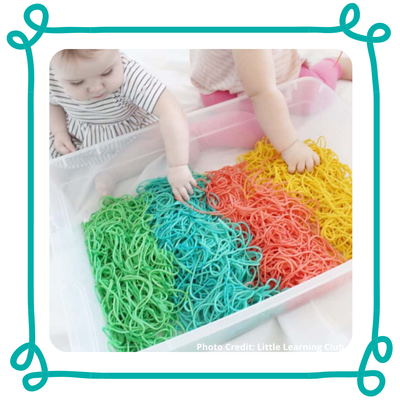Read, Baby, Read is a Free Library initiative focused on encouraging early literacy development among infants and young toddlers under two years old. We work with 12 participating libraries across Philadelphia to reach caregivers of all ages, providing resources that support early literacy skills, language development, and purposeful play. In addition, you can find early literacy tips and resources on our Instagram page @read.baby.read!
Each month, we bring you fun activity ideas with a theme based on the five early literacy practices from Every Child Ready To Read: Read, Sing, Write, Play, and Talk! So far, we’ve explored vehicles, animals, the body, and water!
This month is all about food!
READ
There are many fantastic board books about food available in the Free Library’s catalog. It’s easy to place holds online for free and schedule curbside pick-up at select neighborhood libraries.
- Eating the Rainbow by Rena D. Grossman
Learn about the colors while exploring pictures of various foods. (Also available in Arabic.)
- Feast for 10 by Cathryn Falwell
Count along with this tale of a family grocery shopping and preparing a meal together.
- Baby, Let’s Eat! by Stephan Lomp
This "Indestructibles" book about food is chew-proof, rip-proof, and washable! (Also available in Spanish.)
- Food by Rilla Alexander
The cut-outs in this hands-on "Touch Think Learn" book make reading it a tactile experience for your little one.
- Growing Vegetable Soup by Lois Ehlert
This vibrantly illustrated story shows the process of growing the food that we eat. (Also available in Spanish.)
- Yummy, Yucky by Leslie Patricelli
Compare and contrast food with "not-food" in this silly book.
SING
There are lots of ways to sing about food! In the following storytime, Sarah sings the felt board rhyme "Rainbow Stew," which explores the colors of different fruits with a surprise at the end! The fruit-filled Raffi classic "Apples and Bananas" is another great tune. Because it plays with vowel sounds, it helps your baby develop their phonological awareness, which is their ability to hear the smaller sounds within words. Another fun food tune is the spoof song "On Top Of Spaghetti" which tells the tale of a rogue meatball! For more food-related songs, check out the following list of songs, complete with lyrics to sing along. Many great lap bounces, rhymes, and tickles are about food as well! Nursery rhymes like "Pat-a-Cake" are great because they incorporate touch and foster bonding. You can find lots of interactive food rhymes on Jbrary’s Food Playlist.
WRITE
There are several different ways to "write" with food. Consider making taste-safe edible paint for your baby’s next art project. You can use yogurt, cornstarch, whipping cream, flour, or jello as a base. These paints are perfect for finger painting because it’s okay if babies put their fingers in their mouth during the art experience. You can also try using food as a "paintbrush", like in this vegetable painting activity which makes use of food scraps.
Your little one is also developing their "pre-writing" skills simply by eating finger foods. When your baby picks up a piece of cereal or a pea between their finger and thumb, they’re using the same fine motor grip they’ll eventually need to hold a pen. Putting these foods inside a muffin tin is a great way to further encourage the use of this finger grip.
PLAY
Creating taste-safe or edible sensory play experiences is a great way to let babies "play with their food." Try filling a sensory bin or another container with food like peas, corn, frozen veggies, cereal, cooked pasta, jello, fruit, etc.! Your baby can smoosh everything in their hands, or use cups and spoons to sort, fill, and pour the materials. You can even add an extra visual element by coloring the food—try making rainbow spaghetti! The great thing about food sensory play is that it engages all five of the senses. In addition to seeing and feeling the items, they’re also smelling the food, tasting the flavors, and even hearing the noises it makes in their hands (such as the "squelch" of cooked noodles).
Using ingredients from your kitchen cabinet, you can also create taste-safe substances to put in a sensory bin, such as edible foam, slime, cloud dough, or you could even make some homemade playdough! You can even use pantry ingredients to recreate "nature"—such as making mud for farm animal toys, dirt for construction vehicles, and other natural elements like snow and sand.
TALK
Meal and snack times are a great time to talk to your baby! Did you know that feeding actually helps your child learn to talk? It’s also simply a good time to expand your child’s vocabulary. Talk to them about the textures, shapes, colors, temperatures, and other characteristics of their food. Here are some helpful ideas for more conversation topics. Mealtime talk is great because your child is usually sitting and less distracted than they might be otherwise.
You can also make your food talk! We’ve partnered with the Culinary Literacy Center to show you how to make your vegetables talk.
Be sure to follow us on Instagram for daily tips and resources about early literacy as well as weekly virtual baby storytimes. And stay tuned for next month’s installment of this blog series with a brand new theme!
Read Baby Read’s team includes Early Childhood Specialists, Sarah Jacknis and Natasha Smith, and Program Coordinator Naisha Tyler. If you have questions about our program, feel free to email Naisha Tyler at TylerN @ freelibrary.org.
Read Baby, Read is made possible by a generous grant from the William Penn Foundation.
Have a question for Free Library staff? Please submit it to our Ask a Librarian page and receive a response within two business days.

